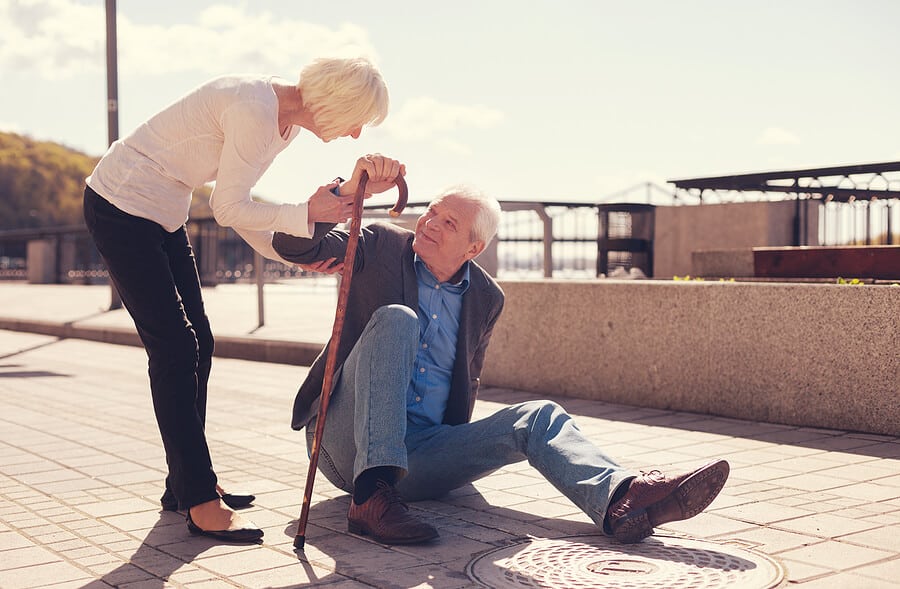In the realm of hearing health, we often focus on the significance of improving communication and enhancing the quality of life for individuals with hearing loss. While these are certainly vital aspects, there’s another aspect of hearing health that often goes unnoticed – the role of hearing aids in preventing falls and accidents. As an audiologist, I am excited to share with you the latest insights into how wearing hearing aids can be a game-changer in averting accidents and promoting overall well-being.
The Hidden Connection: Hearing Loss and Falls
Hearing loss is more than just an inconvenience; it’s a potential hazard to your safety. A growing body of research has uncovered a strong link between untreated hearing loss and an increased risk of falls and accidents. According to a study published in the Journal of the American Geriatrics Society, older adults with untreated hearing loss are nearly three times more likely to experience accidental falls compared to those without hearing impairment.
The reasons behind this connection are multifaceted. When hearing loss is left unaddressed, individuals may struggle to perceive crucial environmental cues, such as the sound of an approaching vehicle, a person’s footsteps, or an alarm signal. This diminished awareness can lead to misjudgments, delayed reactions, and ultimately, accidents that could have been prevented.
The Hearing Aid Advantage
The good news is that hearing aids have emerged as a powerful tool in mitigating the risk of falls and accidents associated with hearing loss. Here’s how they do it:
Enhanced Auditory Awareness:
Hearing aids amplify sounds and improve speech clarity, allowing wearers to regain lost auditory information. This heightened awareness of their surroundings enables individuals to detect potential hazards, such as a car approaching or someone calling out a warning, well in advance.
Improved Balance:
Some advanced hearing aids are equipped with features that help individuals maintain their balance. For example, they can detect changes in head movement and make real-time adjustments to reduce the risk of dizziness and falls. This is especially beneficial for those with age-related balance issues.
Speech Recognition:
Communication is key to safety. Hearing aids improve speech comprehension, making it easier for individuals to understand and respond to spoken instructions or warnings from others, whether it’s a healthcare provider or a concerned family member.
Connectivity:
Modern hearing aids are often equipped with Bluetooth technology, allowing wearers to connect to smartphones and other smart devices. This connectivity can provide safety benefits such as receiving alerts about important environmental sounds, like sirens or alarms.
The Future of Hearing Health
As we continue to advance our understanding of hearing loss and its implications, we are on the brink of exciting developments in hearing aid technology and prevention strategies. Here are some potential futuristic interventions:
Artificial Intelligence (AI):
AI-powered hearing aids can analyze and predict environmental risks based on the wearer’s surroundings and movement patterns. They can provide real-time alerts or even automatically adjust settings to enhance safety.
Wearable Sensors:
Hearing aids may integrate with other wearable devices, such as smart glasses or sensors embedded in clothing, to provide a more comprehensive picture of a person’s environment and movements. This can further reduce the risk of accidents.
Telehealth and Remote Monitoring:
Remote audiology services, combined with wearable technology, will enable professionals to monitor patients’ hearing and balance health continuously. This proactive approach can identify issues before they escalate into safety concerns.
Early Detection is Key
While the future of hearing aids holds promise, early detection and intervention remain paramount. Regular hearing screenings, especially for older adults, can detect hearing loss at its earliest stages, allowing for timely management and the adoption of preventive measures.
Moreover, as an audiologist, I emphasize the importance of ongoing communication between patients and healthcare providers. Individuals should not hesitate to seek professional help if they suspect hearing loss or experience changes in their hearing. Early intervention not only improves hearing health but also plays a crucial role in accident prevention.
Hearing aids are not just about improving the quality of sound; they are a powerful tool in enhancing safety and preventing accidents, particularly for those with hearing loss. The link between hearing loss and falls is undeniable, and the role of hearing aids in mitigating this risk cannot be overstated.
As we look to the future, the integration of advanced technology and early detection methods will further strengthen our ability to protect individuals from accidents related to hearing impairment. However, it is essential to remember that the journey to better hearing and safety starts with recognizing the issue and seeking professional help. Let us continue to champion the cause of hearing health, ensuring that everyone can enjoy a safer, more fulfilling life through the gift of sound.

